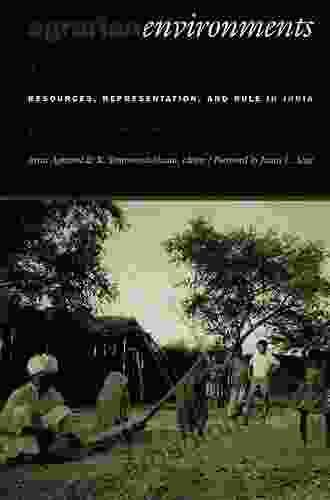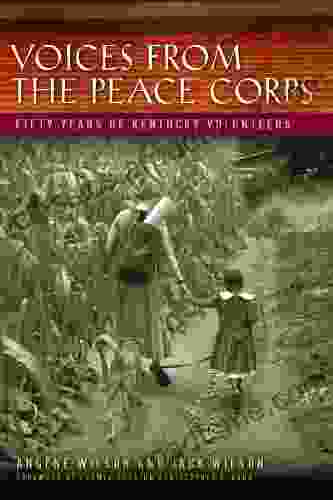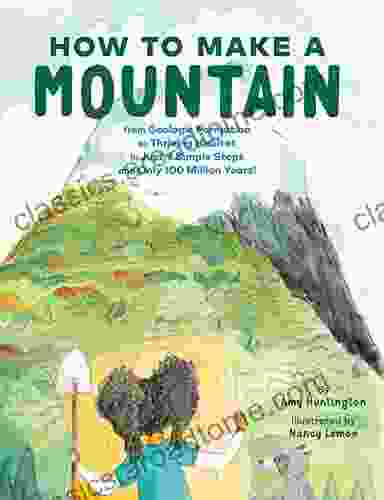Agrarian Environments: Resources, Representations, and Rule in India

This book explores the complex relationships between agrarian environments, resources, representations, and rule in India. It brings together a wide range of case studies to examine how agrarian environments are shaped by and shape social, economic, and political processes.
The book is divided into four parts. The first part, "Resources," examines the ways in which agrarian environments provide resources for human societies. The second part, "Representations," explores how agrarian environments are represented in culture and media. The third part, "Rule," examines the ways in which agrarian environments are governed and regulated. The fourth part, "," draws together the findings of the book and discusses their implications for the future of agrarian environments in India.
5 out of 5
| Language | : | English |
| File size | : | 1492 KB |
| Text-to-Speech | : | Enabled |
| Screen Reader | : | Supported |
| Enhanced typesetting | : | Enabled |
| Word Wise | : | Enabled |
| Print length | : | 330 pages |
Resources
The first part of the book, "Resources," examines the ways in which agrarian environments provide resources for human societies. The chapters in this section explore a wide range of resources, including water, land, forests, and minerals. They show how these resources are used to support human populations and how they are shaped by social, economic, and political processes.
One of the key findings of this section is that agrarian environments are not simply natural resources. They are also social and cultural constructs. The ways in which resources are used and managed are shaped by human values and beliefs. For example, the chapter on water shows how the way that water is used in India is shaped by religious beliefs and social customs.
The chapters in this section also show how agrarian environments are changing. Climate change, population growth, and economic development are all putting pressure on agrarian resources. This is leading to conflicts over resources and is threatening the sustainability of agrarian environments.
Representations
The second part of the book, "Representations," explores how agrarian environments are represented in culture and media. The chapters in this section examine a wide range of representations, including paintings, photographs, films, and literature. They show how these representations shape the way that people think about agrarian environments and how they use and manage them.
One of the key findings of this section is that agrarian environments are often represented in a romanticized way. This can lead to unrealistic expectations about the benefits of agrarian life. For example, the chapter on painting shows how the pastoral ideal has shaped the way that people think about rural life. This ideal has led to policies that promote the development of rural areas, even when these policies are not in the best interests of rural people.
The chapters in this section also show how agrarian environments are often represented in a negative way. This can lead to discrimination against rural people and to the neglect of rural areas. For example, the chapter on film shows how rural people are often portrayed as being backward and ignorant. This portrayal can lead to policies that discriminate against rural people and that make it difficult for them to access basic services.
Rule
The third part of the book, "Rule," examines the ways in which agrarian environments are governed and regulated. The chapters in this section explore a wide range of issues, including land reform, water management, and environmental protection. They show how these issues are shaped by social, economic, and political processes.
One of the key findings of this section is that agrarian environments are often subject to multiple forms of rule. This can lead to conflicts between different levels of government and between different stakeholders. For example, the chapter on land reform shows how land reform policies are often shaped by the interests of powerful landowners. This can lead to policies that benefit landowners at the expense of the poor.
The chapters in this section also show how agrarian environments are often subject to informal rules and regulations. These rules and regulations can be just as powerful as formal laws. For example, the chapter on water management shows how water rights are often governed by local customs and traditions. These customs and traditions can be difficult to change, even when they are not in the best interests of the community.
The fourth part of the book, "," draws together the findings of the book and discusses their implications for the future of agrarian environments in India. The book argues that agrarian environments are complex and dynamic systems that are shaped by a wide range of social, economic, and political processes. It also argues that agrarian environments are essential for the well-being of human societies and that they need to be protected and managed sustainably.
The book concludes by calling for a new approach to agrarian environmental governance. This approach must be based on a deep understanding of the complex relationships between agrarian environments, resources, representations, and rule. It must also be participatory and inclusive, involving all stakeholders in the decision-making process.
References
- Alam, J. (2016). The agrarian question in India: Peasant struggles and the neo-liberal regime. Routledge.
- Bhagat, R. B. (2014). Agrarian change and peasant movements in India: A historical perspective. Routledge.
- Bose, S. (2016). The agrarian crisis in India: The political economy of agrarian transformation. Routledge.
- Chandrasekhar, C. P. (2016). Agrarian relations and economic growth in India: A historical perspective. Routledge.
- Ghosh, J. (2014). The agrarian question in India: A Marxist perspective. Routledge.
5 out of 5
| Language | : | English |
| File size | : | 1492 KB |
| Text-to-Speech | : | Enabled |
| Screen Reader | : | Supported |
| Enhanced typesetting | : | Enabled |
| Word Wise | : | Enabled |
| Print length | : | 330 pages |
Do you want to contribute by writing guest posts on this blog?
Please contact us and send us a resume of previous articles that you have written.
 Book
Book Novel
Novel Page
Page Chapter
Chapter Text
Text Story
Story Genre
Genre Reader
Reader Library
Library Paperback
Paperback E-book
E-book Magazine
Magazine Newspaper
Newspaper Paragraph
Paragraph Sentence
Sentence Bookmark
Bookmark Shelf
Shelf Glossary
Glossary Bibliography
Bibliography Foreword
Foreword Preface
Preface Synopsis
Synopsis Annotation
Annotation Footnote
Footnote Manuscript
Manuscript Scroll
Scroll Codex
Codex Tome
Tome Bestseller
Bestseller Classics
Classics Library card
Library card Narrative
Narrative Biography
Biography Autobiography
Autobiography Memoir
Memoir Reference
Reference Encyclopedia
Encyclopedia Amogh Sukhthankar
Amogh Sukhthankar Andrew Gladwell
Andrew Gladwell Andrew Morton Md
Andrew Morton Md Andrew Beyer
Andrew Beyer Angel Burns
Angel Burns Anais Calatayud
Anais Calatayud Kathleen Power
Kathleen Power Andy Keller
Andy Keller Andi Rhodes
Andi Rhodes Andrew C Scott
Andrew C Scott Angus Konstam
Angus Konstam Amber Hunt
Amber Hunt Andrew Klavan
Andrew Klavan Angela Barbagallo
Angela Barbagallo Animesh Das
Animesh Das Robert J Morgan
Robert J Morgan Sandra Taylor
Sandra Taylor Chase Dalton
Chase Dalton Peter Martland
Peter Martland Jesse Itzler
Jesse Itzler
Light bulbAdvertise smarter! Our strategic ad space ensures maximum exposure. Reserve your spot today!

 August HayesUnveiling the Treasures of Istanbul Aydin University Journal of Faculty of...
August HayesUnveiling the Treasures of Istanbul Aydin University Journal of Faculty of... Elton HayesFollow ·16k
Elton HayesFollow ·16k Brenton CoxFollow ·6.4k
Brenton CoxFollow ·6.4k Troy SimmonsFollow ·9.3k
Troy SimmonsFollow ·9.3k Gil TurnerFollow ·8.1k
Gil TurnerFollow ·8.1k Shaun NelsonFollow ·12.5k
Shaun NelsonFollow ·12.5k Jorge Luis BorgesFollow ·16.3k
Jorge Luis BorgesFollow ·16.3k Rex HayesFollow ·12.2k
Rex HayesFollow ·12.2k Bryson HayesFollow ·14.6k
Bryson HayesFollow ·14.6k

 Braden Ward
Braden WardThe True Story of Murder and Betrayal
In a small town where...
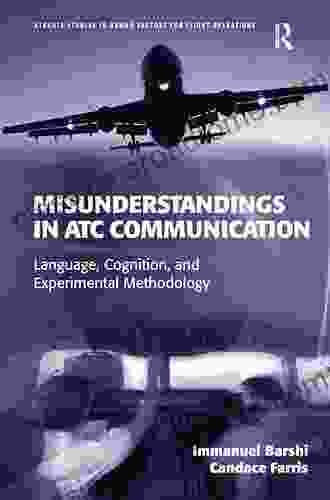
 W. Somerset Maugham
W. Somerset MaughamUnraveling the Complexities of Human Language: A...
Language is a fundamental aspect of human...

 Ibrahim Blair
Ibrahim BlairTrue Crime Tales That Will Keep You on the Edge of Your...
Prepare to be...
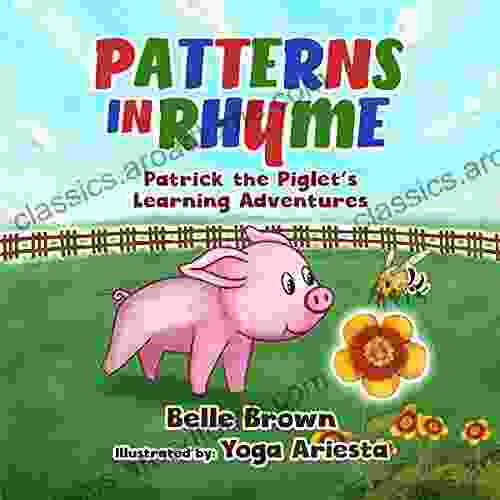
 Rick Nelson
Rick NelsonPatterns In Rhyme: A Journey of Discovery with Patrick...
Welcome to the...

 Edgar Hayes
Edgar HayesWithout Pity: Unmasking the Evil Within
In the realm of true...

 Cooper Bell
Cooper BellFannie Lou Hamer's Indelible Legacy: Unraveling the...
The Black Freedom Movement, a pivotal...
5 out of 5
| Language | : | English |
| File size | : | 1492 KB |
| Text-to-Speech | : | Enabled |
| Screen Reader | : | Supported |
| Enhanced typesetting | : | Enabled |
| Word Wise | : | Enabled |
| Print length | : | 330 pages |


